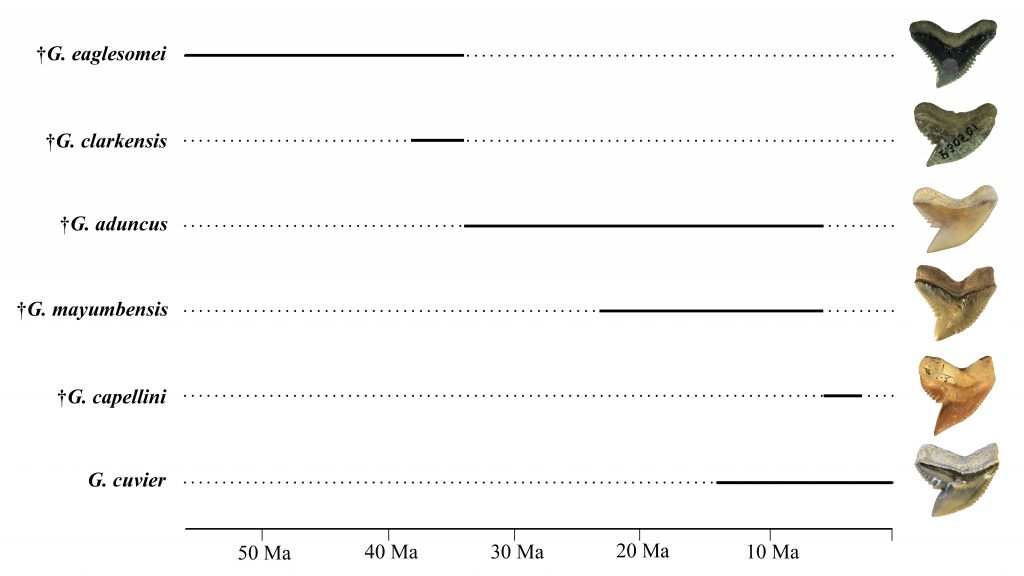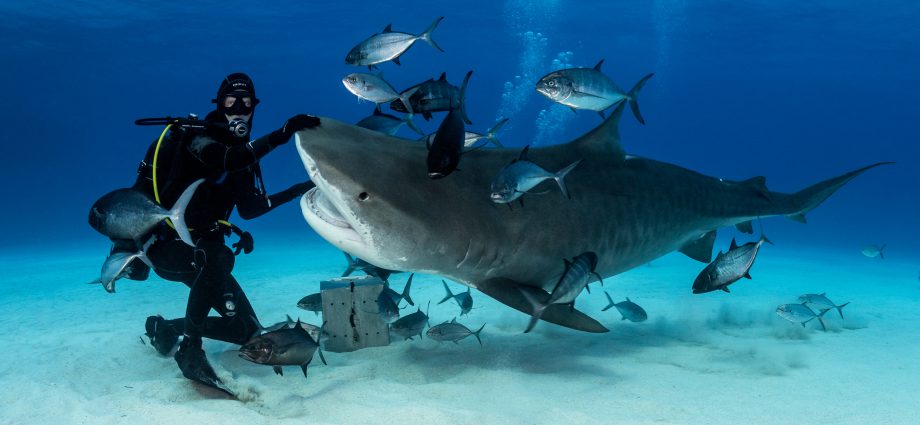VIENNA (Austria)- Modern tiger sharks are older than previously thought and in the past several tiger shark species existed compared to the single species living today.
That’s what an international team of researchers, led by Julia Türtscher from the University of Vienna, found out by examining the fossil record of these apex predators. The results of this study are published in the journal “Paleobiology”.
A cosmopolitan species
With a total length of up to 5.5m, the tiger shark is one of the largest predatory sharks known today. This shark is a cosmopolitan species occurring in all oceans worldwide. The fossil history of modern sharks reaches back to the Permian, about 295 million years ago. Complete fossil shark skeletons are very rare – the skeleton, which consists almost entirely of cartilage, is only preserved under very special circumstances during the fossilization processes. Due to the lifelong continuous tooth replacement, most extinct sharks are therefore only known by their well-mineralized teeth, which, nonetheless, can provide deep insights into their evolutionary history.
Unique teeth

The teeth of the modern tiger shark are unique: they have a broad, double-serrated cutting edge which even allows them to cut through sea turtle shells with ease. Tiger shark teeth are known in the fossil record since about 56 million years. Based on these fossil teeth, over 22 extinct tiger shark species have been described.
Julia Türtscher and her team from the University of Vienna has now examined the fossil history of the tiger shark and its extinct relatives. With the help of geometric morphometrics, the scientists were able to show that only 5 of the 22 known fossil tiger sharks actually represent valid species. Nevertheless, tiger sharks were more diverse in the past and only a single species survived until today.
Another intriguing detail in the tiger shark fossil record emerged during this study. Up to now, it was assumed that the modern tiger shark originated ca. 5.3 million years ago. The team, however, was able to identify several 13.8 million year old fossil teeth as belonging to this shark demonstrating that it originated much earlier than previously assumed.
Read more at the Vienna University.

